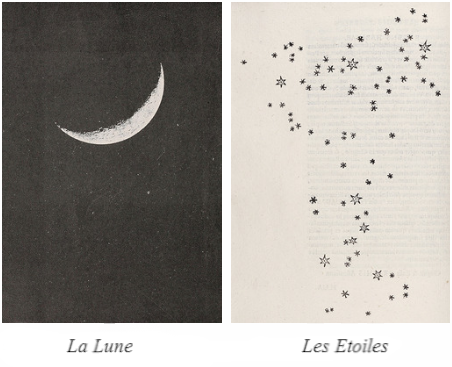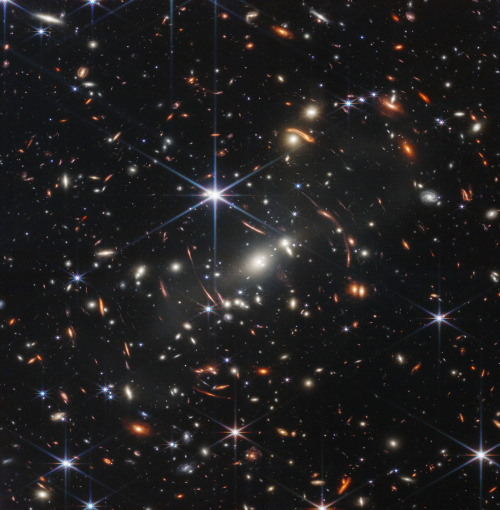Seeing The Photos From Webb Up Against Photos From Hubble Just Makes Me… I Don’t Even Know Like,
seeing the photos from Webb up against photos from Hubble just makes me… I don’t even know like, wow! Look at that!








More Posts from Starlost and Others

LDN 483 is located about 700 light-years away in the constellation of Serpens (The Serpent).
Credit: Warren Keller
Something to think about that we don't usually think about
You actually can’t see light. You can only see what light hits.


M2 9: Wings of a Butterfly Nebula : Are stars better appreciated for their art after they die? Actually, stars usually create their most artistic displays as they die. In the case of low-mass stars like our Sun and M2-9 pictured above, the stars transform themselves from normal stars to white dwarfs by casting off their outer gaseous envelopes. The expended gas frequently forms an impressive display called a planetary nebula that fades gradually over thousands of years. M2-9, a butterfly planetary nebula 2100 light-years away shown in representative colors, has wings that tell a strange but incomplete tale. In the center, two stars orbit inside a gaseous disk 10 times the orbit of Pluto. The expelled envelope of the dying star breaks out from the disk creating the bipolar appearance. Much remains unknown about the physical processes that cause planetary nebulae. via NASA
js






The qrcodes do take to each planets' nasa site. I learned a lot of each planet while doing this work.
My favorite is Saturn! Which ones yer favorite?
![Squidolus [Day:1333 Hour:0]](https://64.media.tumblr.com/3a377fdcd28414c8453fe58f5bc3de17/9a801140d86e85cc-ff/s500x750/ae3648f977b222c992ba491f125cf00e6097456d.png)
Squidolus [Day:1333 Hour:0]

Caldwell 92 by NASA Hubble

-
 gazelles-gazelles liked this · 2 weeks ago
gazelles-gazelles liked this · 2 weeks ago -
 captain-redwolf liked this · 3 weeks ago
captain-redwolf liked this · 3 weeks ago -
 skitterspam reblogged this · 3 weeks ago
skitterspam reblogged this · 3 weeks ago -
 future-viner liked this · 1 month ago
future-viner liked this · 1 month ago -
 margocooper liked this · 1 month ago
margocooper liked this · 1 month ago -
 mintbecrazy reblogged this · 1 month ago
mintbecrazy reblogged this · 1 month ago -
 mintbecrazy liked this · 1 month ago
mintbecrazy liked this · 1 month ago -
 raammpaggee liked this · 1 month ago
raammpaggee liked this · 1 month ago -
 viktorsbedpartner reblogged this · 1 month ago
viktorsbedpartner reblogged this · 1 month ago -
 strawbebbyboba reblogged this · 2 months ago
strawbebbyboba reblogged this · 2 months ago -
 ionas-idk liked this · 3 months ago
ionas-idk liked this · 3 months ago -
 rhythmofherdrum liked this · 3 months ago
rhythmofherdrum liked this · 3 months ago -
 crispycoffeestudent reblogged this · 3 months ago
crispycoffeestudent reblogged this · 3 months ago -
 justiceandwar98 reblogged this · 3 months ago
justiceandwar98 reblogged this · 3 months ago -
 justiceandwar98 liked this · 3 months ago
justiceandwar98 liked this · 3 months ago -
 ittybi liked this · 3 months ago
ittybi liked this · 3 months ago -
 cqsmic reblogged this · 3 months ago
cqsmic reblogged this · 3 months ago -
 no32557038 liked this · 3 months ago
no32557038 liked this · 3 months ago -
 eclecticcollections2 reblogged this · 3 months ago
eclecticcollections2 reblogged this · 3 months ago -
 eclecticcollections2 liked this · 4 months ago
eclecticcollections2 liked this · 4 months ago -
 sciencetidbitsarchive reblogged this · 4 months ago
sciencetidbitsarchive reblogged this · 4 months ago -
 liebestod-tchai liked this · 4 months ago
liebestod-tchai liked this · 4 months ago -
 lime2342 reblogged this · 4 months ago
lime2342 reblogged this · 4 months ago -
 forgetme-eternally-blissfully reblogged this · 5 months ago
forgetme-eternally-blissfully reblogged this · 5 months ago -
 forgetme-eternally-blissfully liked this · 5 months ago
forgetme-eternally-blissfully liked this · 5 months ago -
 restfulldoll liked this · 5 months ago
restfulldoll liked this · 5 months ago -
 jerzee55z liked this · 5 months ago
jerzee55z liked this · 5 months ago -
 madmax76d reblogged this · 5 months ago
madmax76d reblogged this · 5 months ago -
 madmax76d liked this · 5 months ago
madmax76d liked this · 5 months ago -
 cronostitan liked this · 5 months ago
cronostitan liked this · 5 months ago -
 astat3ofgrac3 reblogged this · 5 months ago
astat3ofgrac3 reblogged this · 5 months ago -
 xolboragainandagain liked this · 5 months ago
xolboragainandagain liked this · 5 months ago -
 savythenillerwaffer liked this · 5 months ago
savythenillerwaffer liked this · 5 months ago -
 sleepystellarsister reblogged this · 6 months ago
sleepystellarsister reblogged this · 6 months ago -
 stepsfrozenintime reblogged this · 6 months ago
stepsfrozenintime reblogged this · 6 months ago -
 annap5hg7 liked this · 6 months ago
annap5hg7 liked this · 6 months ago -
 annamnq7p liked this · 6 months ago
annamnq7p liked this · 6 months ago -
 m0ssba11 liked this · 6 months ago
m0ssba11 liked this · 6 months ago -
 annat4rnh liked this · 6 months ago
annat4rnh liked this · 6 months ago -
 annalgyrg liked this · 6 months ago
annalgyrg liked this · 6 months ago -
 whythiskolaveridiii liked this · 6 months ago
whythiskolaveridiii liked this · 6 months ago -
 annae4ev5 liked this · 6 months ago
annae4ev5 liked this · 6 months ago -
 a-mystic-sheep reblogged this · 6 months ago
a-mystic-sheep reblogged this · 6 months ago

andrei, he/him, 21, made this at 14 when i was a space nerd but i never fully grew out of that phase so,,,,..,hubble telescope + alien life + exoplanet + sci fi nerd
245 posts



